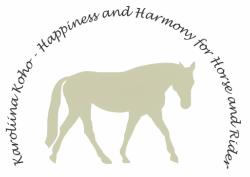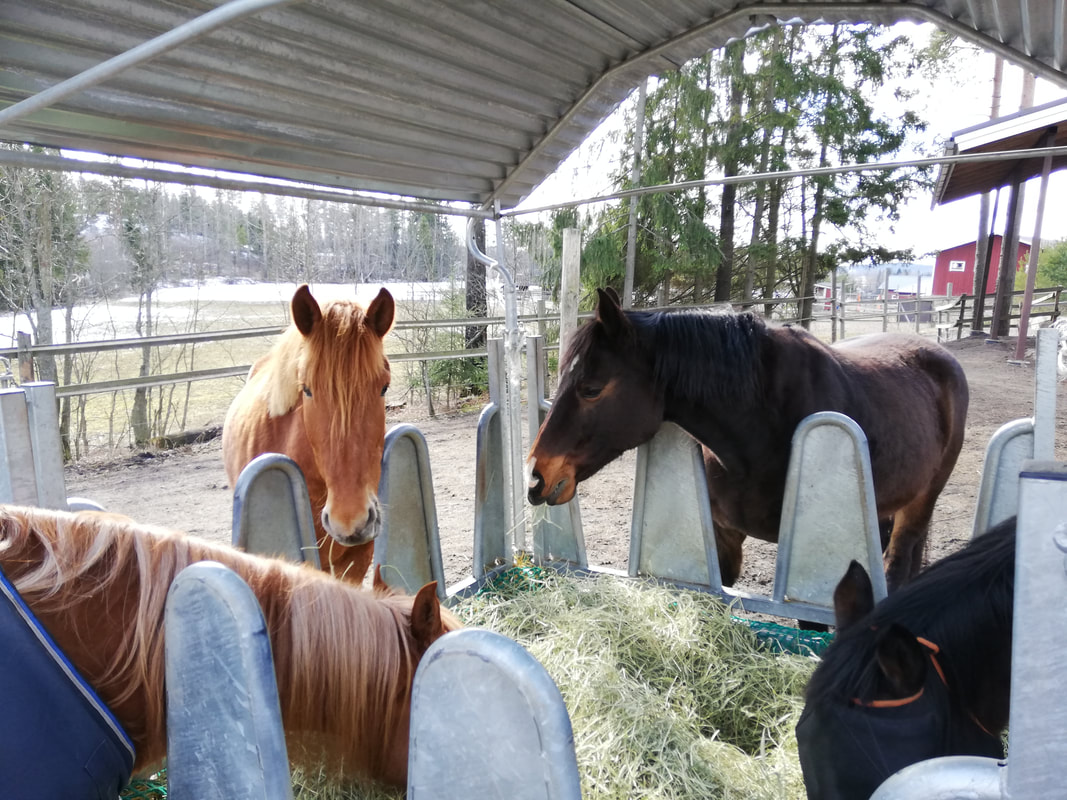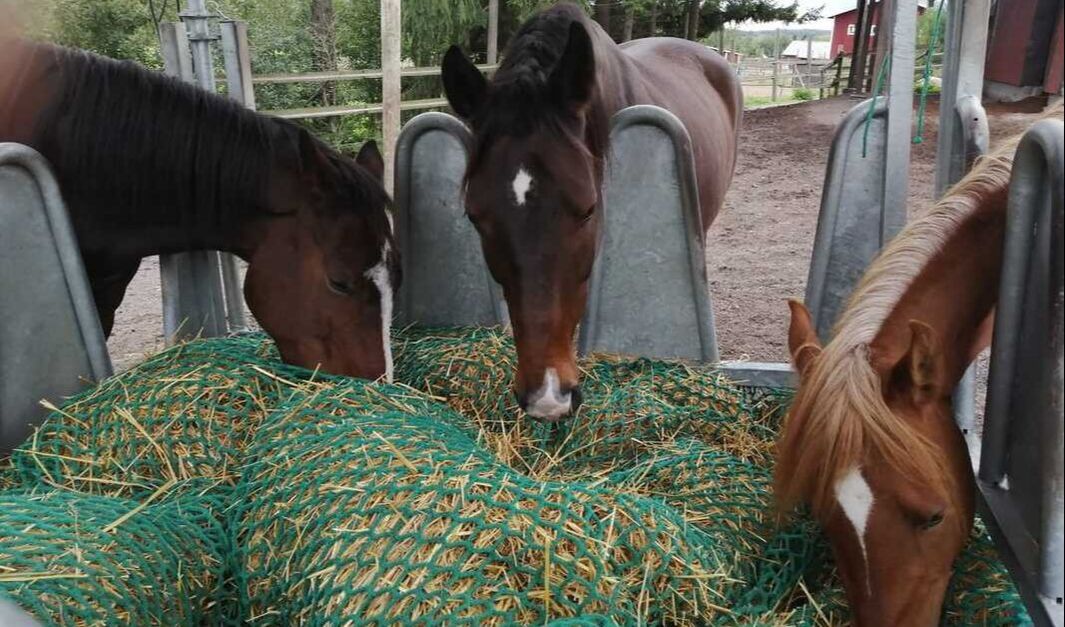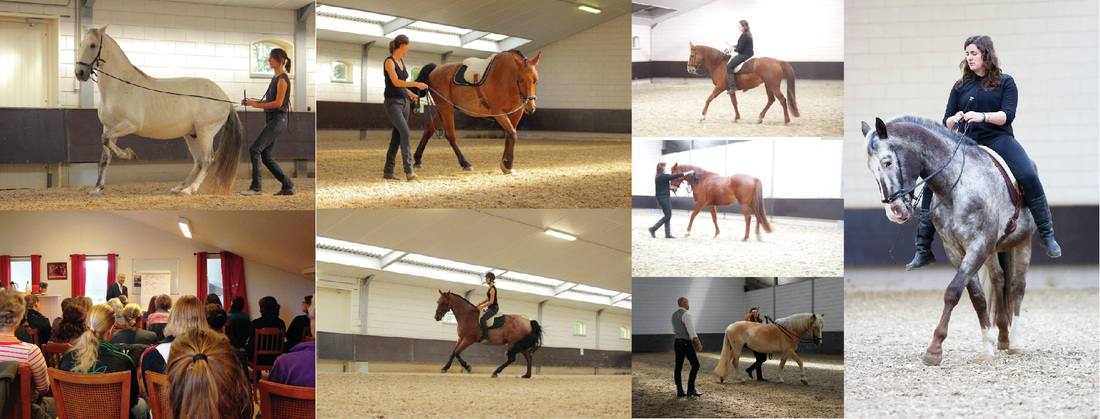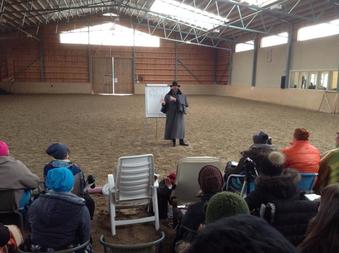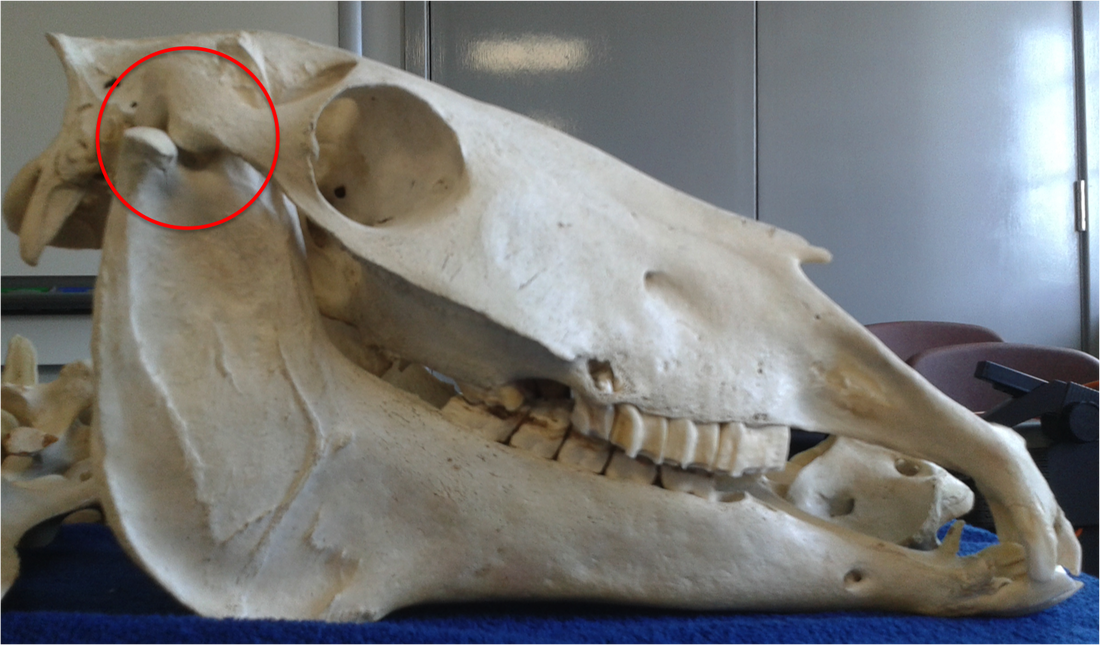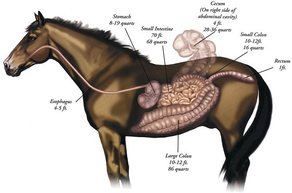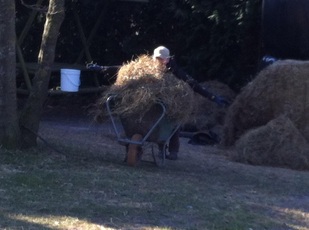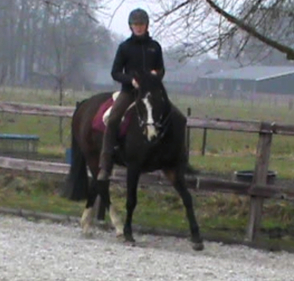Yksi yleisistä pihattoratkaisuista ruokinnan suhteen on, että hevosilla on vapaa heinä. Tämä voi kuitenkin johtaa painonhallinta ongelmiin ja monet hevoset lihoavat vapaalla heinäruokinnalla, vaikka heinä luokiteltaisiinkin ’harrastehevosille sopivaksi’ ja vähä sokeriseksi. Näin oli myös Palomäessä vielä vuosi sitten mutta ei enää.
Kuinka tämä on sitten mahdollistettu? Viime kesästä saakka ja kuluneen talven yli osa pihattolaisten korsiruokinnasta on korvattu hyvälaatuisella kauranoljella. (voit lukea lisää olkiruokinnan aloituksesta ja liikalihavuudesta täältä)
Kuinka korsiruokinta on talven yli järjestetty? Hevosilla on ollut vapaata olkea tarjolla koko ajan. Näin vatsahaavalle altis puoliverinen on pysynyt tyytyväisenä, kun korsirehua on ollut aina saatavilla. Muillekin olki on maittanut ja hiekkaongelmat, jotka lumettoman talven vuoksi ovat olleet yleisiä ainakin Etelä-Suomessa, ovat pysyneet kurissa.
Oljen lisäksi kuivaheinää (sokerit: 92 g/kg ka; muuntokelpoinen energia (ME): 9,3 MJ/kg ka) on jaettu kolme kertaa päivässä. Kuivaheinää hevoset saivat alkusyksyllä 5.5kg per päivä mutta sitä lisättiin jo loppusyksyllä 6kg per hevonen per päivä. Oljen kulutus puolestaan on vaihdellut noin 3 ja 5 kg välillä per hevonen per päivä, mutta keskimäärin kulutus on ollut noin 3.5 kg luokkaa.
Kaikki hevoset ovat yksilöitä ja näin on hyvä muistaa, että toimiva ruokinta pitää räätälöidä sen mukaan. Laumassa ruokinnan on kuitenkin tapahduttava sen hevosen ehdoilla, kuka kuluttaa vähiten, muuten ei voi välttyä lihoamisriskiltä. Siksi heinämäärä pidettiin suhteellisen matalana ja yli 6kg/päivä/hevonen heinämääriä ei annettu, vaikka osalle laumaa se olisi sopinutkin.
Miksi näin? Yksittäistä hevosta voi aina syöttää enemmän erillään. Näin järjestimme toimivan talviruokinnan myös Palomäessä. Osa hevosista sai lisä heinää erillään ja kaikki saivat myös tarvittavat proteiini-, kivennäis- ja mineraalilisät. Näin saavutimme tasapainon ruokinnan suhteen ja ratkaisu on ollut toimiva kaikille.
Kaiken kaikkiaan Palomäen pihatossa on olkiruokinnasta vain positiivisia kokemuksia. Jos olet kiinnostunut kokeilemaan olkea osana korsiruokintaa, alla on muutamia tippejä, joista voi olla hyötyä.
- Oljen pitää olla hyvänlaatuista ja puhdasta. Siinä ei saa olla hometta.
- Kauranolki on hyvä olkivaihtoehto, joka sopii hevosille. Vehnänolki voi olla toinen vaihtoehto.
- Jos haluaa niin olkipaalin päälle voi laittaa yhden suhteellisen isosilmäisen verkon, joka ei ole liian tiukka. Hevoset selvästikin tykkäävät kaivella olkipaalia ja etsi olkipaalista parhaat kohdat ensin. Näin paaliin tulee pieniä koloja. Jos verkko olisi kovin pieni ja kireä, kaivelu ei onnistuisi.
- Jos on kosteaa ja märkää, olki imee itseensä kosteutta. Märkä olki ei ole niin maittavaa kuin kuiva olki. Märkä olki voi myös alkaa homehtumaan. Tarjolla olevan oljen määrä on siis hyvä pitää suhteellisen pienenä, jotta se säilyy maittavana ja hyvänä.
- Muista aloittaa olkiruokinta hitaasti, jotta hevosen suolistolla on aikaa tottua siihen.
- On erittäin tärkeää, että hevosella on aina tarjolla puhdasta vettä. Se vähentää suolentukkeutumisen riskiä.
- Jos hevosella on huonot hampaan, oljen pureskeleminen voi olla hankalaa. Jos et ole varma hevosesi hampaiden kunnosta, pyydä eläinlääkäriä tarkistamaan hampaiden kunto. Säännöllinen hammashuolto on tärkeä osa hevosen hyvinvointia.
- Kun aloitat oljen syöttämisen, ole kärsivällinen. Voi mennä hetki enne kuin hevosesi tottuu säännölliseen oljen syöntiin. Jos olki on hyvänlaatuista, on se yleensä myös maukasta.
- Oljen niin kuin heinänkin energia ja sokerimäärä on hyvä mitata, jotta ruokinnan voi suunnitella tarkasti ja pitää huolen, että hevonen saa tarpeeksi proteiiniä, mineraaleja ja vitamiineja. Yleisesti ottaen oljessa on hyvin vähän energiaa, sokeria, proteiinia ja muita ravinteita. Keskimäärin kauranoljessa on energiaa (ME) noin 6MJ/kg ka ja sokerit ovat 16g/kg ka luokkaa, joka on noin 10 kertaa vähemmän kuin kuiva heinässä (LUKE, 2015). Olki siis sopii mainiostani insuliiniresistanssille hevoselle.
Lähteet:
Luonnonvarakeskus (LUKE), 2015. Rehutaulukot ja ruokintasuositukset. Märehtijät – Siat – Siipikarja – Hevoset ISBN: 978-952-326-054-2 Koko raportin voit ladata täältä
